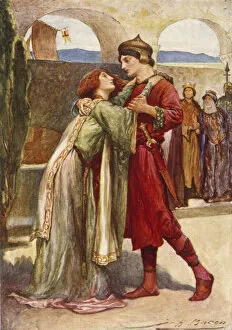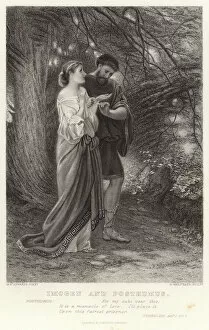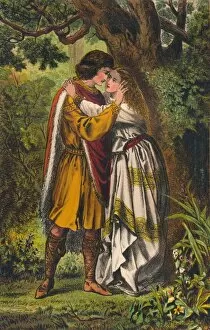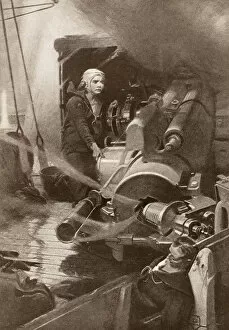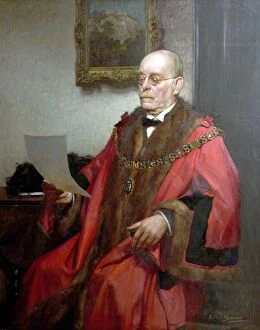Posthumus Collection
"Posthumus: A Tragic Tale of Love and Betrayal" In this captivating illustration by Kenny Meadows to William Shakespeare's play Cymbeline
For sale as Licensed Images
Choose your image, Select your licence and Download the media
"Posthumus: A Tragic Tale of Love and Betrayal" In this captivating illustration by Kenny Meadows to William Shakespeare's play Cymbeline, we are introduced to the tormented character of Posthumus. Imogen's husband, Posthumus, is depicted here in a state of anguish as he grapples with Iachimo's supposed evidence that he has slept with his beloved wife. The color litho portrays Posthumus and Imogen together, their faces filled with both love and despair. It captures the complexity of their relationship amidst the turmoil they face. The intensity of emotions is further emphasized in another litho from the same play, where Imogen and they can engraved in a poignant moment from Act I, Scene 2. Shakespeare's words come alive through these illustrations – "My queen. My mistress. O lady weep no more. " These lines echo throughout the scene as Posthumus pleads for Imogen's forgiveness. The artist Robert Charles Dudley beautifully captures this emotional plea in his artwork from Cymbeline. Amidst these images lies a deeper connection to history. Samuel Reddish, an English actor known for portraying iconic characters like Posthumus on stage, adds another layer to our understanding of this tragic figure. Similarly, John Travers Cornwell VC emerges as a symbol of heroism during World War I – perhaps drawing parallels between the sacrifices made on the battlefield and those made within relationships. Posthumus' story resonates across time; it speaks not only to Shakespearean tragedy but also to universal themes such as jealousy, trust, and redemption. As we delve into this tale through various artistic interpretations spanning different eras - chromolithos or engravings - we witness how its impact endures.


